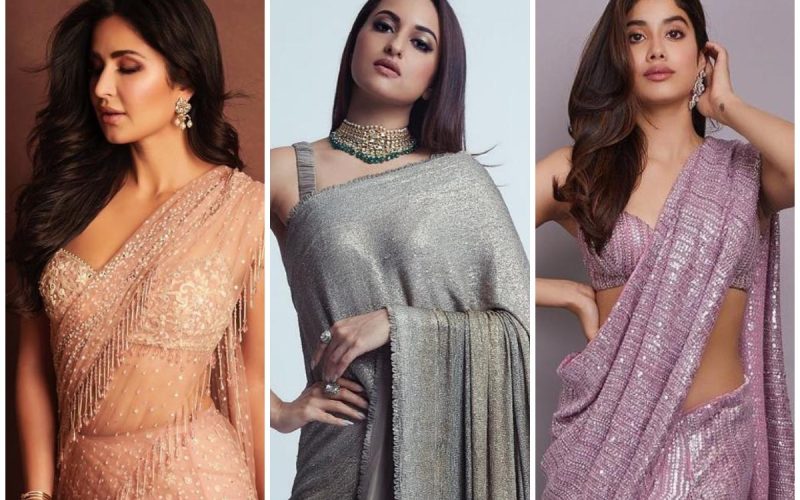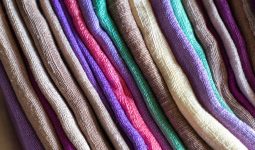The Saree, the embodiment of ethnic fashion, makes a lady appear gorgeous and feel royal.
When you think about sarees, you think of an eclectic classic style that has endured the test of time.
Thanks to current inventions and techniques, contemporary craftsmen may weave sarees in the newest and most distinct styles, preserving the age-old cultural history.
The saree tradition is so deeply ingrained in Indian culture that a new collection of sarees is released every other day to please saree-obsessed ladies.
Sarees are versatile garments that can be worn on practically any occasion, whether for everyday use or a special event such as a wedding or celebration.
Even if you spend your days sitting in front of a computer from 9 to 5, or completing household chores, a saree will always be there for you!
Below are the different types of sarees.
1. Taant Saree

This traditional Bengali saree is made of cotton and is the favored daily wear dress of many Bengalis.
It’s lightweight and comfortable to wear, and the broad border and lovely designs make it a must-have.
It was typically merely a mundu (dhoti), a blouse, and a stole that went across the blouse, and it was also known as Settu saree.
This style is still alive and well among many elderly ladies. The Kasavu saree is a contemporary take on the traditional saree, with a wide golden border weaved with actual gold threads.
However, it has expanded to incorporate colors and synthetic thread to keep up with the changes.
2. Kanjeevaram Saree

These types of sarees are the queen of sarees manufactured from traditional woven silk from the Kanjeevaram area.
The sarees are very colorful and have a lot of substance. They are beautiful, sophisticated, and graceful all in one drape.
3. Bomkai Saree
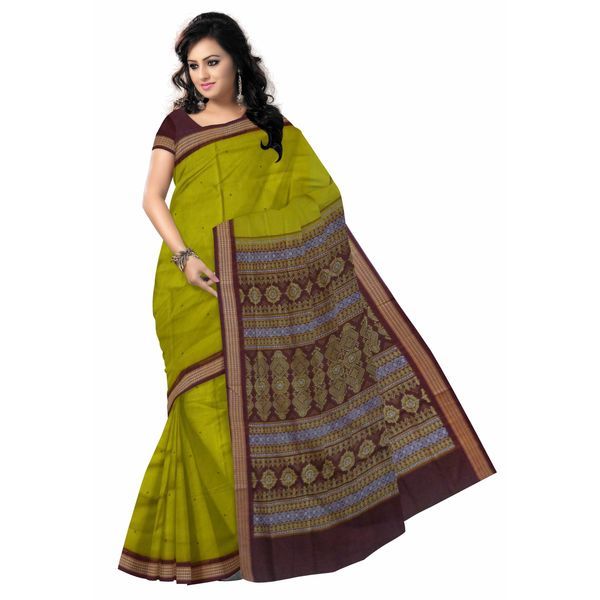
The Bomkai saree, also known as Sonepuri silk, is a work of art with ikat, embroidery, and complex threadwork woven into a nine-yard masterpiece. They come in silk and cotton and are perfect for the holidays.
4. Chanderi Saree
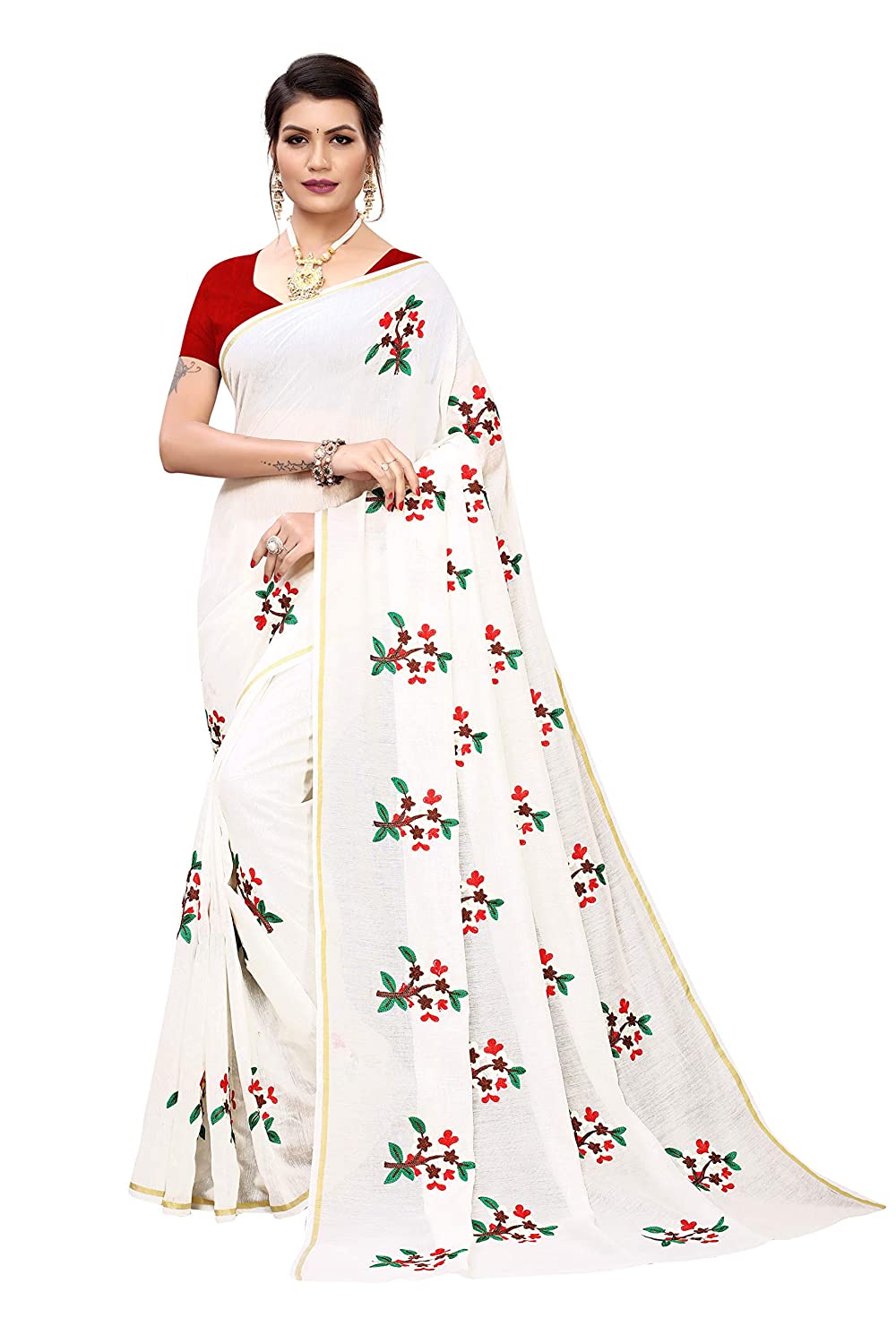
These types of sarees are manufactured from pure silk, fine cotton, and zari and are intricately designed and elegantly handmade in the Madhya Pradesh town of Chanderi.
These feather-light and translucent sarees, made from one of India’s finest textiles, are a must-have in any woman’s wardrobe.
These sarees are the epitome of unparalleled workmanship and aesthetic refinement.
These stunning sarees have themes like peacocks, coins, flowers, geometric patterns, and animal images to enchant the senses.
5. Patola Silk Saree

Patola is a double ikat woven saree made of silk and made in Patan, Gujarat. Patola is the plural form, whereas patolu is the singular form. The double Ikat weave implies that the two sides are indistinguishable after the saree is produced.
Both sides have the same intensity and color, as well as the same feel and appeal. Weaving a saree takes three or four months, making them extremely expensive.
Their history reveals that females once solely wore them from the royal and aristocratic classes.
Although they are somewhat costly, these types of sarees are a must-have for those ladies who can afford them.
6. Mysore Silk Saree
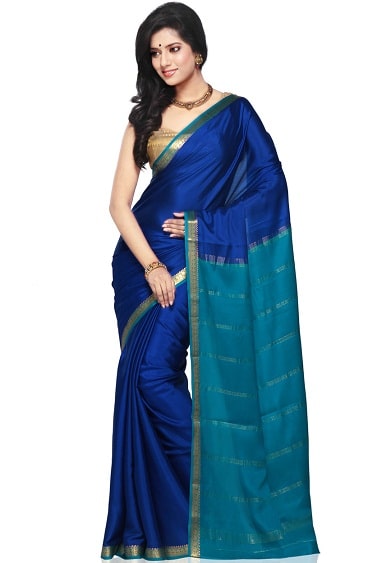
Mysore silk sarees are one of the types of sarees that are the trademark for the silk sarees made by Karnataka Silk Industries Corporation.
They are a well-known and sought-after Indian garment. Mysore silk sarees, one of the purest types of silk, are known across the world for their vibrant colors and rich feel.
“The use of real silk and 100 percent pure gold zari, 65 percent silver and 0.65 percent actual gold is the most characteristic aspect of the colorful Mysore silk saree.”
These sarees include golden lace on the margins or the shoulder section.
7. Paithani Saree
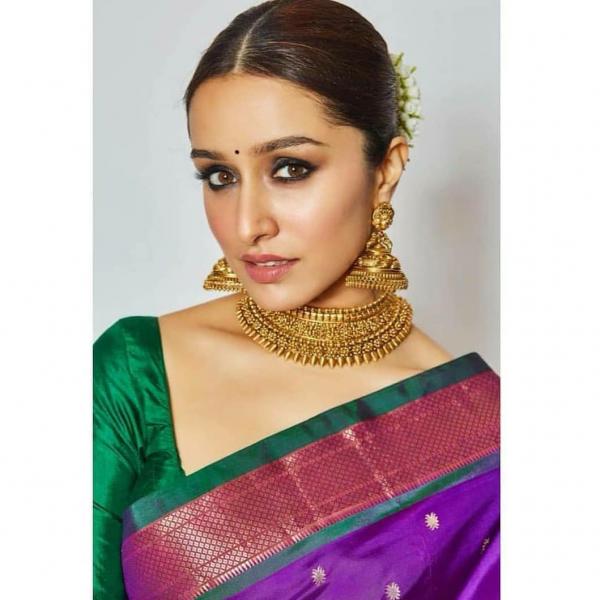
These magnificent silk sarees, named after the Paithan area of Maharashtra, are handmade and offer a unique combination of luxuriance and richness.
Paithani sarees are made with unrivaled craftsmanship using high-quality silk, vibrant colors, elaborate motifs, and decorative zari.
These pricey garments, mainly worn at weddings and other important events, are imprinted with motifs such as lotus, flowers, peacocks, trees, parrots, and narali prints.
Semi-paithani sarees and Tathastu paithani sarees, for example, are subcategories of these types of sarees.
8. Sambalpuri Saree
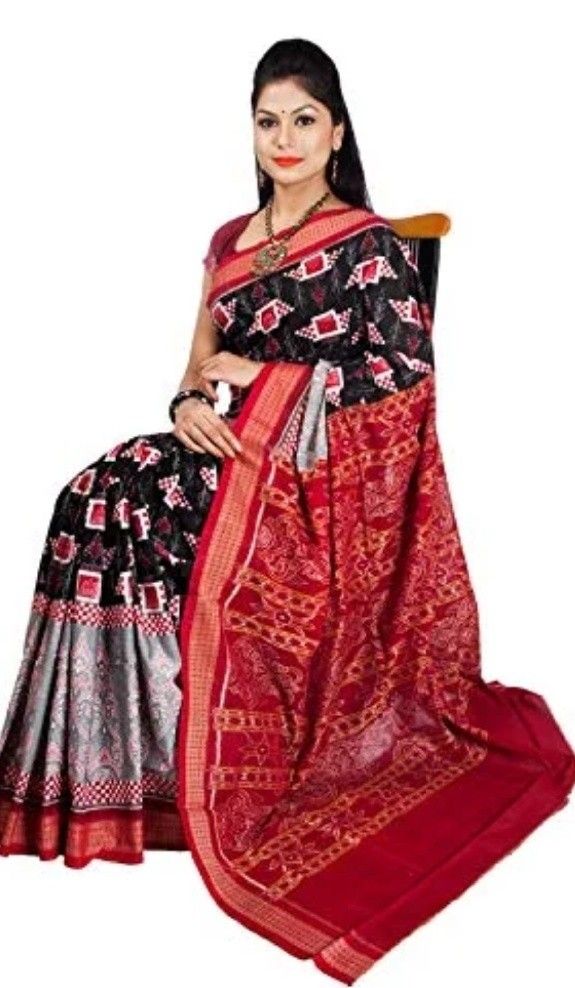
Sambalpuri sarees, known as the pride of Orissa, are fashioned from silk and cotton with distinctive embroidered patterns to meet the desires of saree-loving women.
These sarees are quite comfortable to wear and ideal for various tasks, including conducting home chores or sitting at an office for long periods.
These beautiful types of sarees have grown fairly popular in other regions of India after establishing a stronghold in Orissa.
9. Phulkari Saree
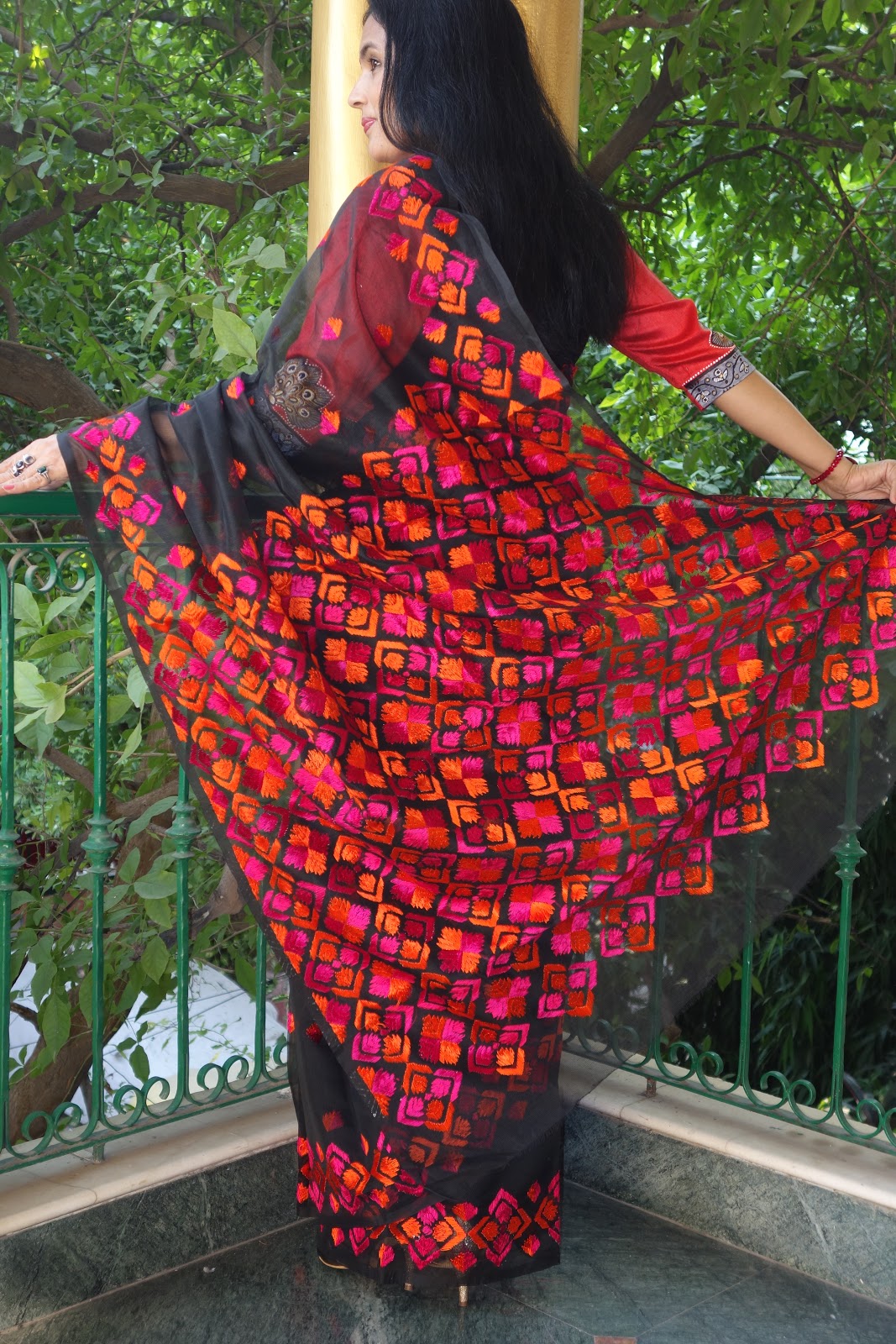
These meticulously designed sarees are some of India’s most renowned sarees, usually red with a dazzling glossy texture.
Based on Punjabi Phulkari, these attractively embroidered types of sarees provide a distinct display of flower art on handwoven cotton fabric.
A darn stitch produces attractive and intriguing motifs on the wrong side of the cloth. If you want to feel like you’re wearing Punjabi attire, phulkari is the way to go.
10. Bhagalpuri Saree
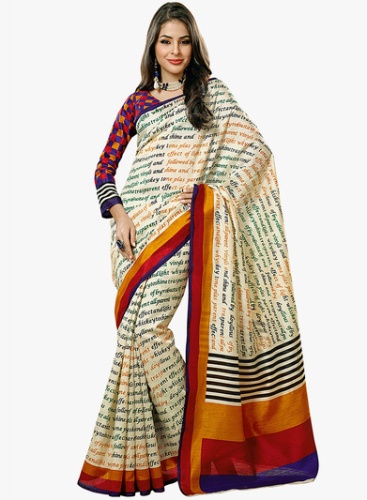
These types of sarees are also known as tussar silk and are named after a small village in Bihar called Bhagalpur.
Bhagalpur, often known as the Silk City, is famous for making world-class silk sarees popular among women of all ages.
The unique dying process that provides a hypnotizing effect to these amazing ethnic clothing items has made these exceedingly lovely sarees highly popular worldwide.
11. Pochampally Saree

These incredibly attractive sarees, Pochampally Ikat, are created in Telangana’s Nalgonda area.
These double ikat sarees are known for geometric designs imprinted on the finely woven fabric, made from a special blend of fine silk and cotton.
People are fascinated by the designs because they are so expertly constructed. Because of the fabric’s lightness and ease, it’s ideal for summer.
Pochampally cotton and silk sarees are equally popular and well-known in South India, particularly in Andhra Pradesh and Telangana.
12. Bandhani Saree
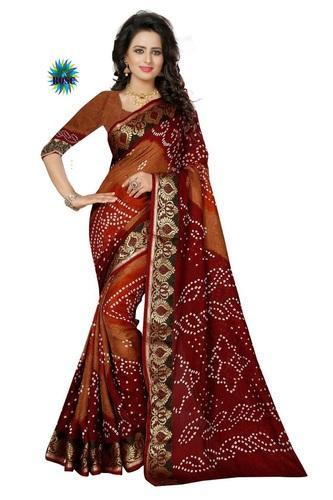
These bandhani sarees, usually red and black in hue, are from Gujarat and Rajasthan.
This saree’s name comes from the dye and tie procedure derived from the word “bandhan,” which means “ties.”
Tieing the cloth at irregular intervals produces intriguing patterns, such as stripes, waves, dots, and squares.
These sarees come in vibrant colors like red, blue, yellow, and green. They are ideal for different stages of life, such as a newly married woman wearing a red saree and a mother wearing a yellow saree.
Bandhani sarees with kundan and mirror embroidery are in high demand. Pure silk and cotton bandhan sarees with a traditional touch are also available.
13. Baluchari Saree

Baluchari sarees are silk sarees created in Bengal’s Murshidabad and Bankura districts. Women from aristocratic and rich Bengali households wore these sarees during festival seasons.
Legendary stories from the Ramayana and Mahabharata are woven into the borders of these loom-woven sarees.
Handwoven silk sarees with exquisite floral designs carved on the corners are normally five yards long.
The most magnificent baluchari sarees are woven with gold-colored threads, which give the cloth a particular gloss and gloss.
14. Muga Saree
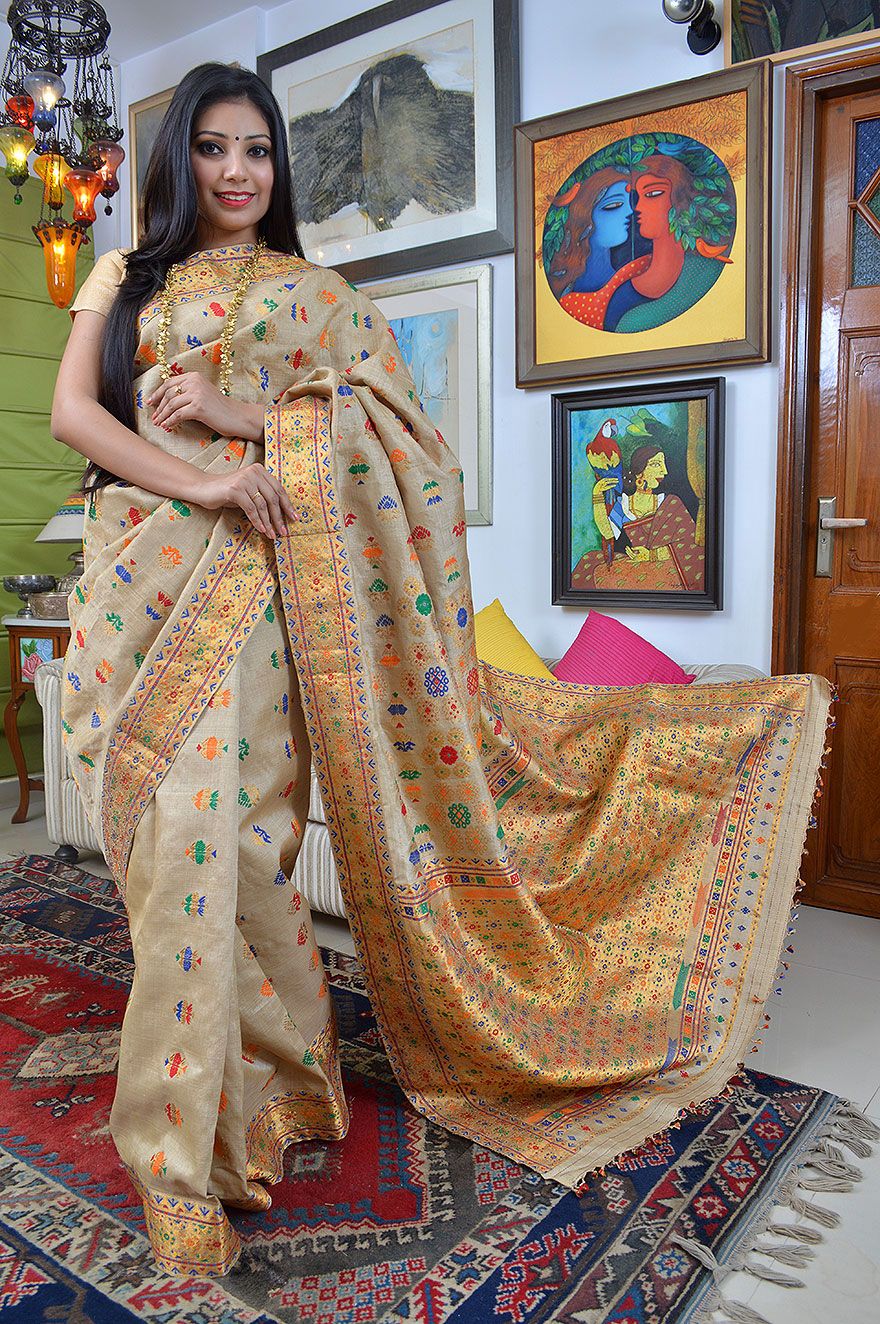
Muga sarees are woven from Assamese silk, which is the rarest of its type. The unusual golden tone of the sarees is mostly due to the silk’s uniqueness. These sarees offer a remarkable amount of resilience and longevity.
Other colors are added to the basic yellow basis to make the sarees more appealing. This Muga silk garment is a rich fabric recognized worldwide for its shine and shine, making it ideal for special events.
Muga sarees from Tussar and Assam are two renowned varieties of MUGA sarees.
15. Kasavu Saree
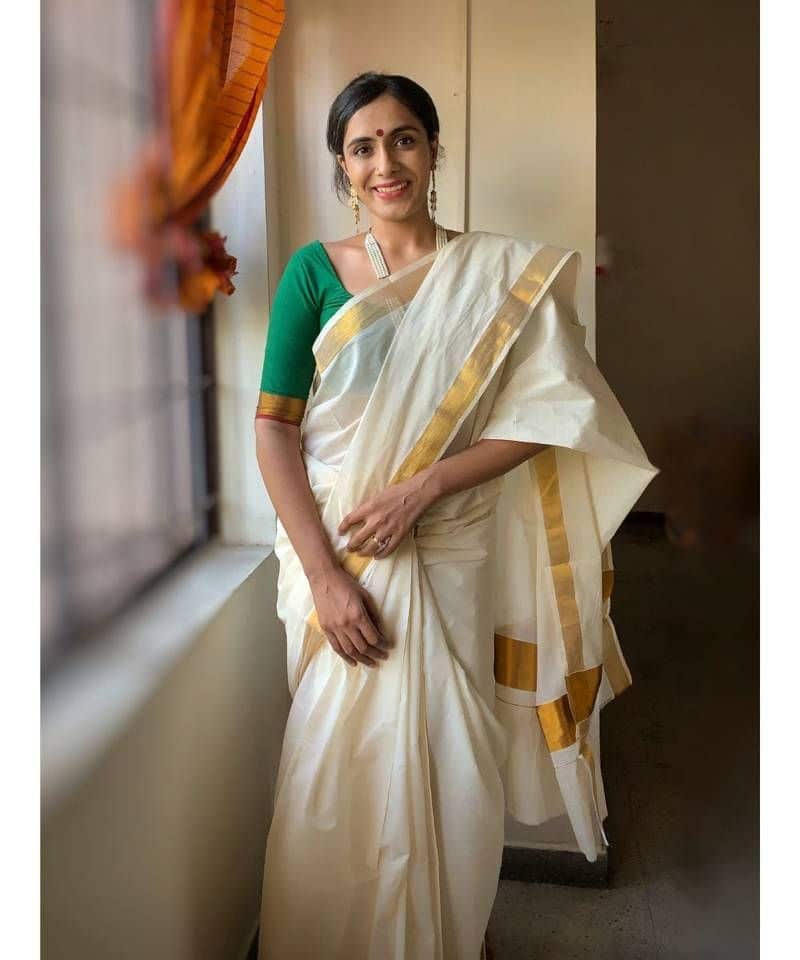
These sarees from Kerala are typically white or cream and are worn mostly during festivals and weddings.
The golden brocade that runs around the margins of these sarees is known as ‘Kasuvu.’ The traditional kasuvu sarees are handwoven from 100 percent natural cotton, although they have changed throughout time to include cotton and silk.
These sarees, which feature a golden border, have become popular due to their elegance and simplicity.
The popularity of this saree in Kerala may be gauged by the fact that it is regarded incomplete without it in Mohini Attam, Kerala’s traditional dance.
16. Chikankari Saree
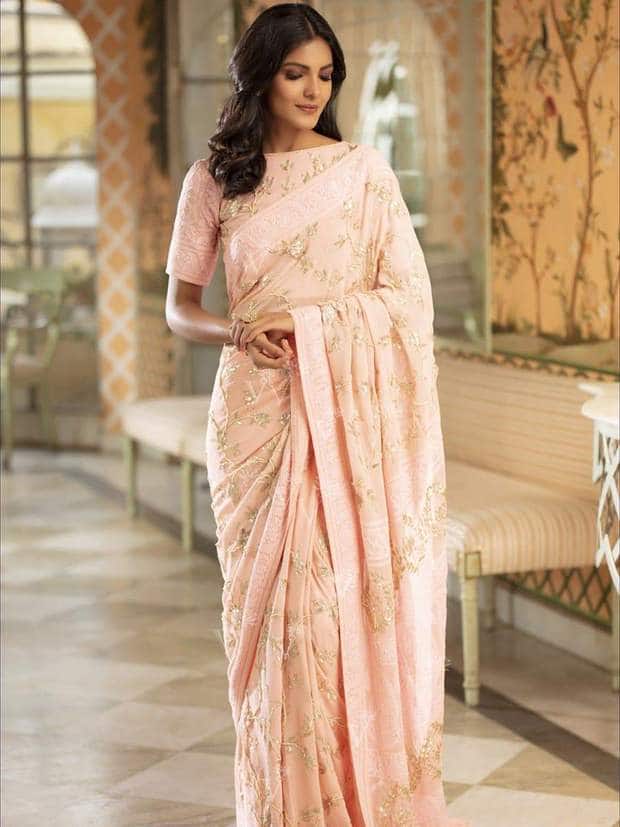
The Chikankari saree, undeniably the pride of Lukhnow, was historically a muslin cloth dress that has developed to be offered in various textiles.
The motifs and embroidery of Chikankari sarees are done using a range of threads and techniques, and thanks to the use of synthetic threads, the fabric is now highly advanced.
It’s a one-of-a-kind variant of traditional Indian sarees, with a light texture and soothing color palette appropriate for any event, casual or formal. Pink and half-white Chikankari sarees are quite popular and well-liked.
17. Konrad Saree
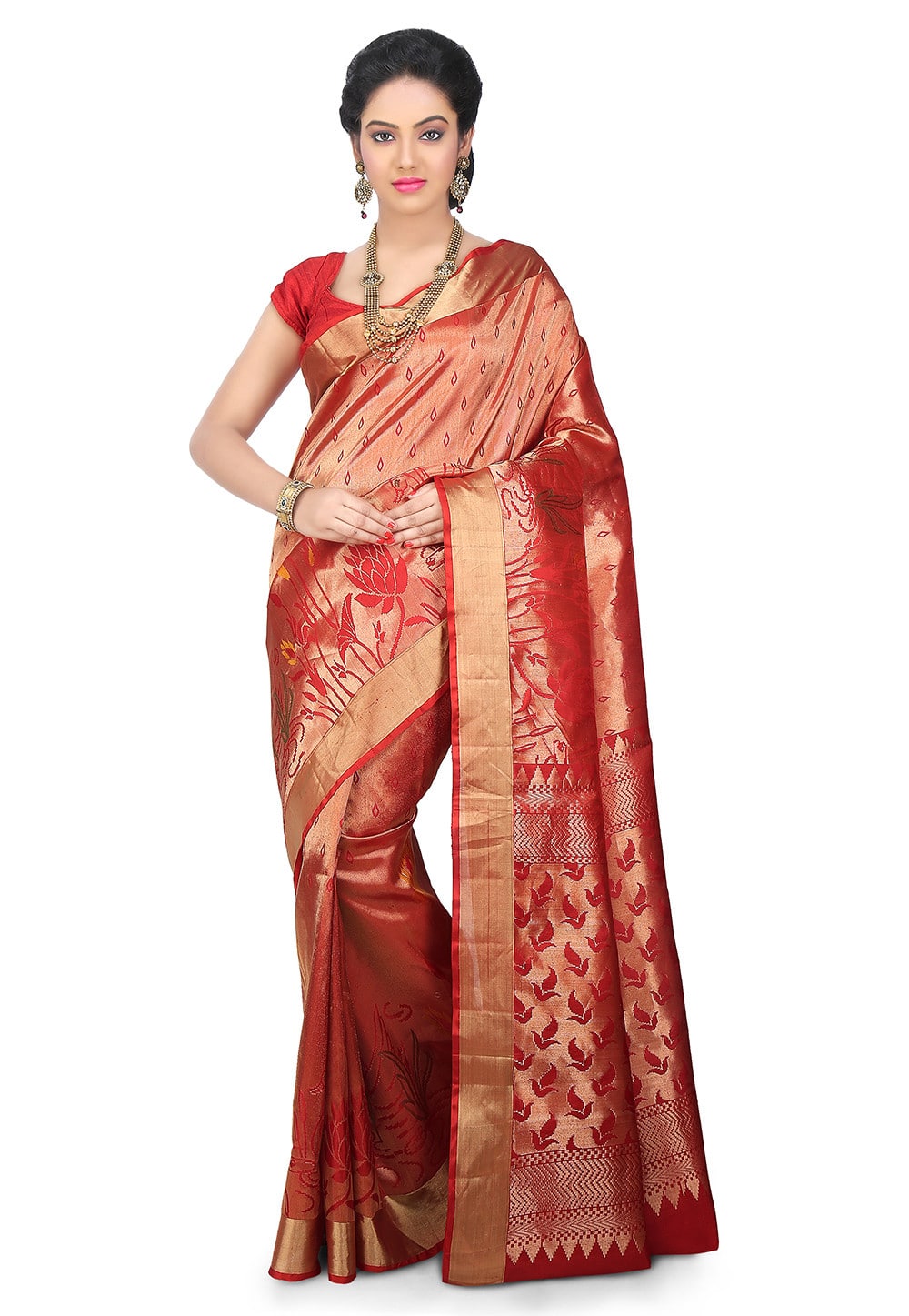
Konrad sarees, sometimes called Temple sarees, are manufactured in Tamil Nadu. They were originally intended for temple deities. These types of sarees have a shorter length than traditional sarees.
The sarees have a particular appearance and feel that distinguishes them from other silk sarees.
The motifs of animals and birds engraved on the borders of these gorgeous and graceful sarees provide a unique touch to this ethnic clothing.
18. Kota Saree
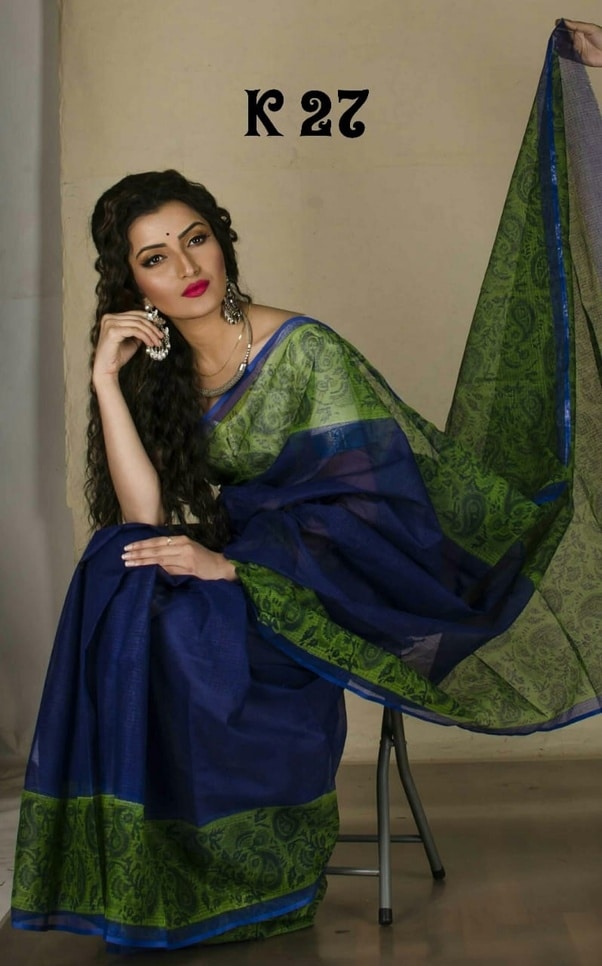
These types of sarees originated in the Rajasthani city of Kota. These lovely translucent sarees, often composed of fine cotton, silk, or a combination of the two, are suitable for any casual or formal occasion.
The softness of the material makes these sarees perfect for the hot summer months.
Initially white or beige, these sarees are now available in a broad range of hues, thanks to the introduction of new weaving techniques.
The fabric’s light, transparent, and thin feel makes it quite comfortable. Pure Kota sarees, Zari Kota sarees, plain Kota sarees with zari border, and other types are popular.
19. Dhakai Jamdani Saree

It is not without reason that Bengali ladies are considered the most attractive in the world.
Dhakai sarees originated in Dhaka and are presently in Bangladesh. They are the greatest example of Bengali sarees.
These types of sarees are also known as Bangladeshi dhakai jamdani and Bangladeshi jamdani.
Dhakai Jamdani sarees are distinguished by elaborately carved designs that appear to emerge from the light and translucent fabric.
These exquisite and light sarees exude a magical aura. These stunning sarees elevate Bengali women to the top of the world’s most beautiful women list.
20. Gadwal Saree
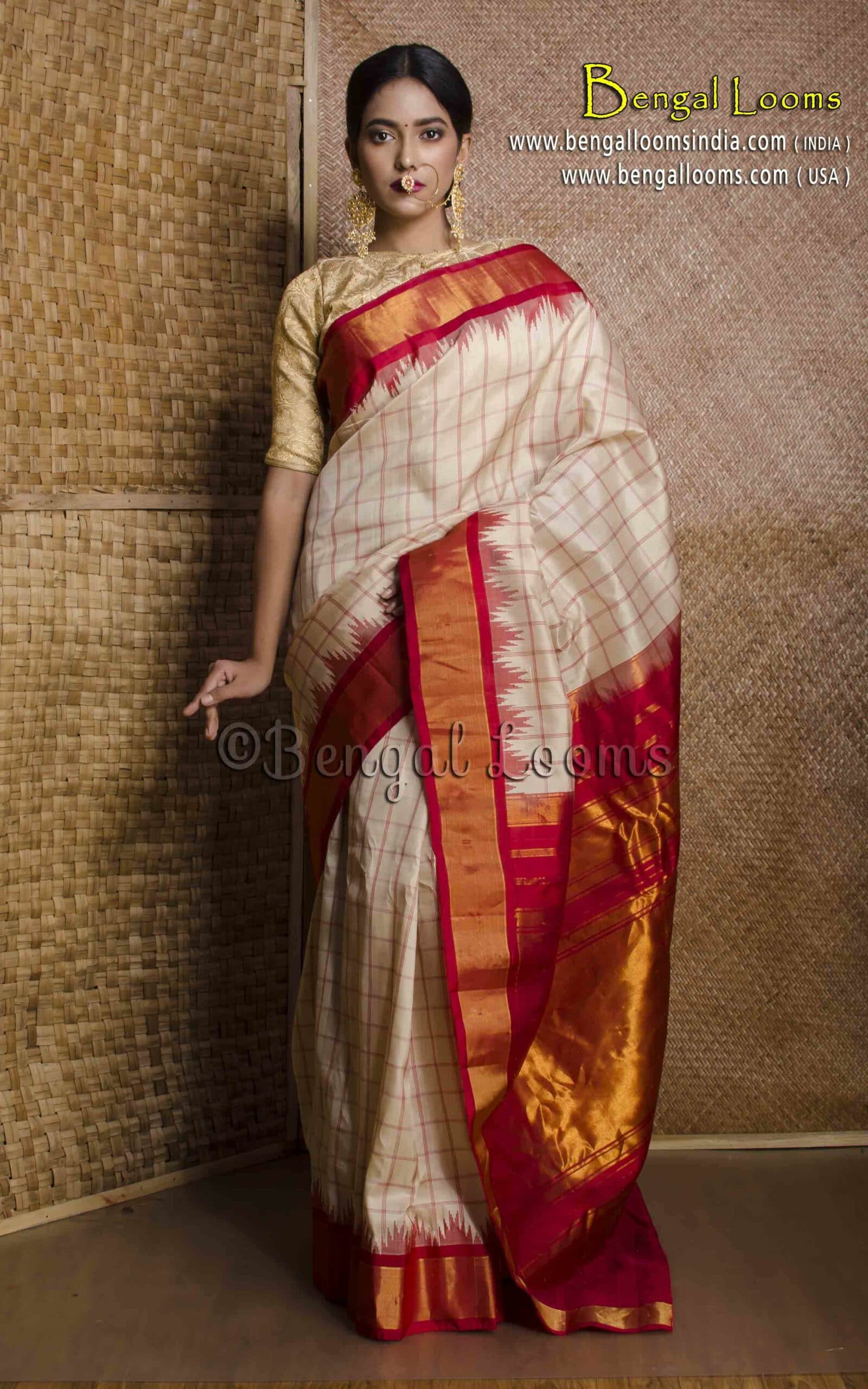
Gadwal, located between the rivers Tungabhadra and Krishna, is known for its handloom weaving industry, which spans Andhra Pradesh, Telangana, and Karnataka.
Silk Gadwal sarees are recognized for their gorgeous zari work and wonderfully made Kuttu borders. Other features include lightweight and easy-to-wear fabric.
Gadwal sarees are special for any occasion because they combine traditional quality and modern style.
In and around Hyderabad, Gadwal sarees are very popular.
21. Jamawar Saree

These lovely sarees are from Kashmir. Jamawar is a well-designed saree with vibrant colors and eye-catching patterns embroidered on pure silk or pashmina.
The name ‘Jamawar’ refers to a traditional Indian saree previously used by royalty for clothing.
It is now a highly popular variation of Indian traditional sarees that you may wear for special occasions.
The saree is distinguished because many versions come with matching silk shawls and are embellished with meenakari colors such as green or orange and gorgeous border stitching.
22. Kantha Stitch Saree

Kantha embroidery is a form of needlework originating in West Bengal and Orissa. A simple run stitch produces the saree’s design on a silk or cotton yard.
Colorful silk thread stitches are used to create elaborate designs all over these traditional Indian sarees, especially on the pallu and border.
23. Tanchoi Saree
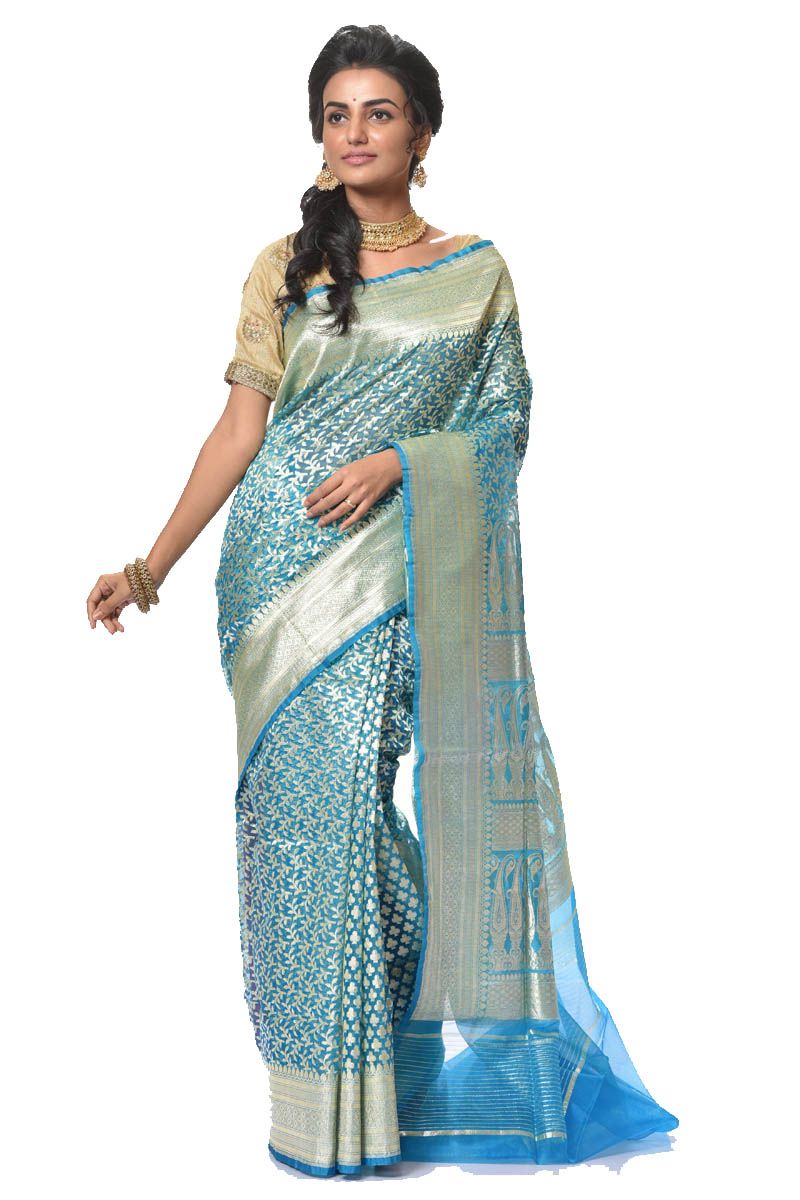
Tanchoi is a unique weaving method that uses a single or double warp and two to five colors in the weft, which are frequently the same shade. It is done on silk cloth.
It is a popular silk saree both inside and outside India due to its rich hues and soft fabric.
These sarees are ideal for formal events, including weddings, ceremonies, and celebrations.
Because of the warmth of the fabric, the best time to wear a tanchoi saree is during the colder months of autumn and winter.
24. Kimkhab Saree
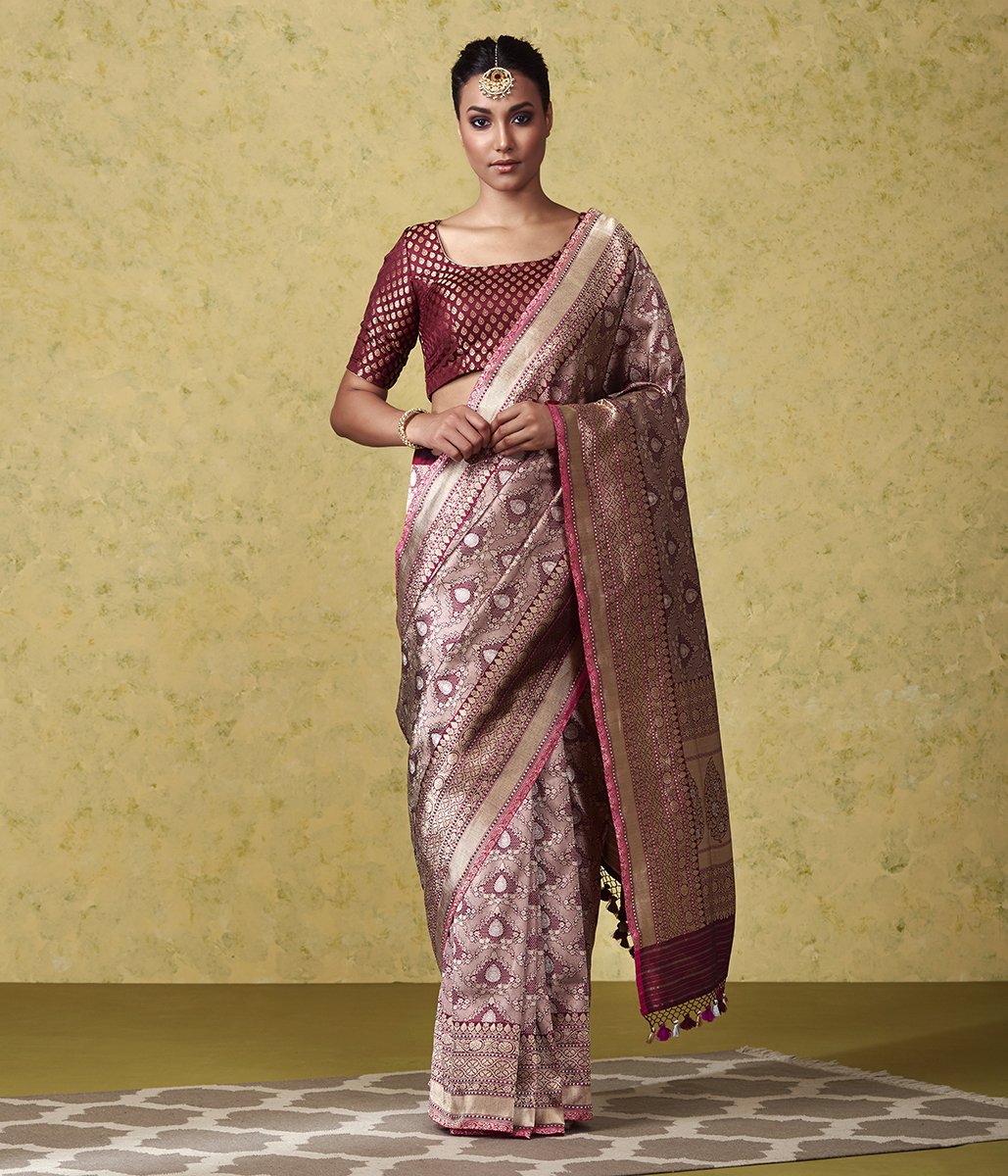
These sarees were extremely popular during the Mughal Empire and are considered one of the most opulent and best fabrics available.
This design is now commonly used for bridal sarees, which feature rich brocade and elaborate embroidery inspired by Islamic cultural history.
The brocade pattern includes wefts, layers, and warp threads, all of which contribute to the intricate effect generated by the embroidered design.




